
Stroll across any number of cities throughout June, and you’ll find the near-ubiquitous presence of the rainbow pride flag, which has come to represent the LGBTQ community worldwide. This year alone, the iconic, six-stripe pattern has been seen in children’s books, at theme parks and on a seemingly endless series of clothing lines; a revamped version of the design was worn by “Master of None” writer and star Lena Waithe as a “queer superhero” cape at the Met Gala last month in New York.
The original rainbow pride flag dates back to 1978, when it was created by San Francisco-based queer artist Gilbert Baker for a mere $1,000. A self-described “geeky kid from Kansas,” Baker relocated to San Francisco as an Army draftee in 1970. After an honorable discharge from the military, he decided to remain in the City by the Bay to pursue a design career.
In 1974, Baker’s life changed forever when he was introduced to rising queer activist Harvey Milk, who owned a camera shop in San Francisco’s Castro district. Milk, of course, would go on to win a seat as a San Francisco city supervisor in 1977, becoming the first openly gay man elected to public office in California in the process. Along with writer Cleve Jones and filmmaker Artie Bressan, Milk pressed Baker to create a recognizable emblem of empowerment for the queer community. The artist looked back to America’s bicentennial celebrations over the previous year for inspiration.
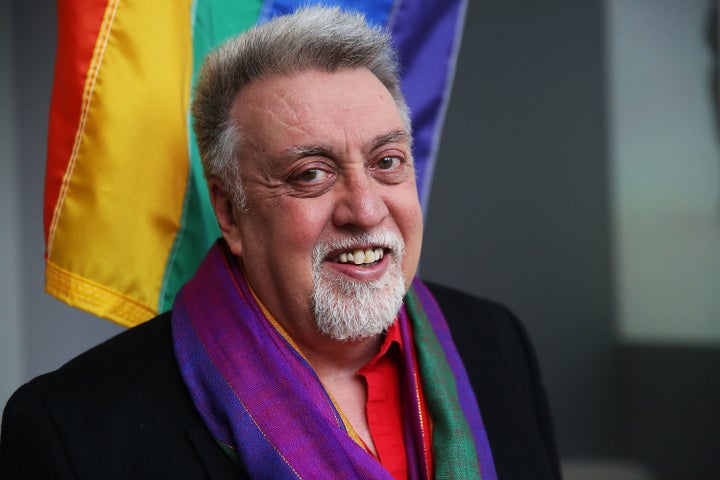
“As a community, both local and international, gay people were in the midst of an upheaval, a battle for equal rights, a shift in status where we were now demanding power, taking it. This was our new revolution: a tribal, individualistic, and collective vision. It deserved a new symbol,” Baker wrote in his as-yet-unpublished memoir, excerpts of which have appear on the Gilbert Baker Estate’s website.
“I thought of the American flag with its thirteen stripes and thirteen stars, the colonies breaking away from England to form the United States,” he wrote. “I thought of the vertical red, white, and blue tricolor from the French Revolution and how both flags owed their beginnings to a riot, a rebellion, or revolution. I thought a gay nation should have a flag too, to proclaim its own idea of power.”
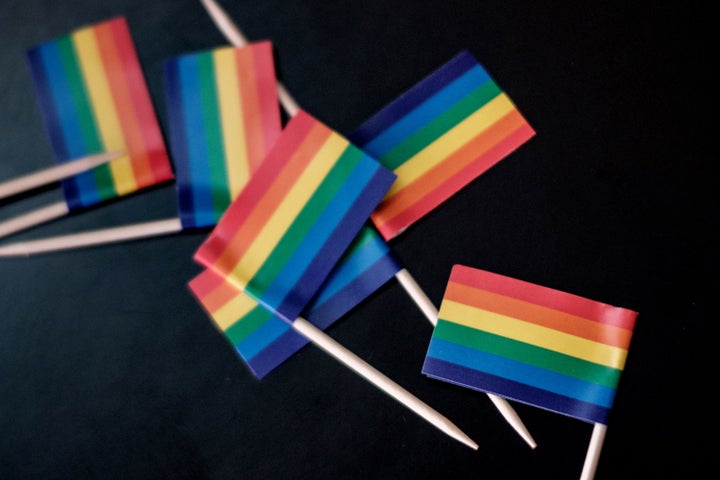
Milk went on to ride under the original, eight-striped rainbow pride flag at the San Francisco Gay Freedom Day Parade in June 1978, just months before he was assassinated. Over the next two years, the design was altered to its current, six-stripe version, but the flag’s all-inclusive message remained intact.
Baker, who died in 2017, never became rich from his design, but it has since been used to symbolize solidarity with LGBTQ movements not just in the U.S. but around the world.
In the years since its creation, the flag has generated a mythology of its own, which Baker “understood was something beyond his control,” according to close friend Charles Beal, who is also manager of creative projects at the Gilbert Baker Estate. “He purposely never copyrighted the flag because he wanted it to be owned by everyone.”
In honor of LGBTQ Pride month, Beal spoke with HuffPost to discuss the history of his friend’s flag.
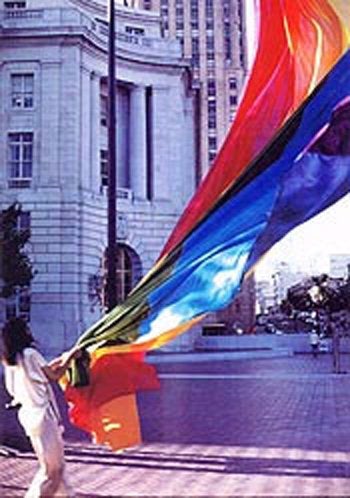
Over the next two years, its design was changed for different reasons. At the time, hot pink was a non-standard color in flag fabric production, and deemed too costly to reproduce. The turquoise and indigo stripes were also dropped in favor of royal blue when organizers of San Francisco's Gay Freedom Day Parade wanted to split the flag in half to fly across the street and wanted equal stripes on both sides.
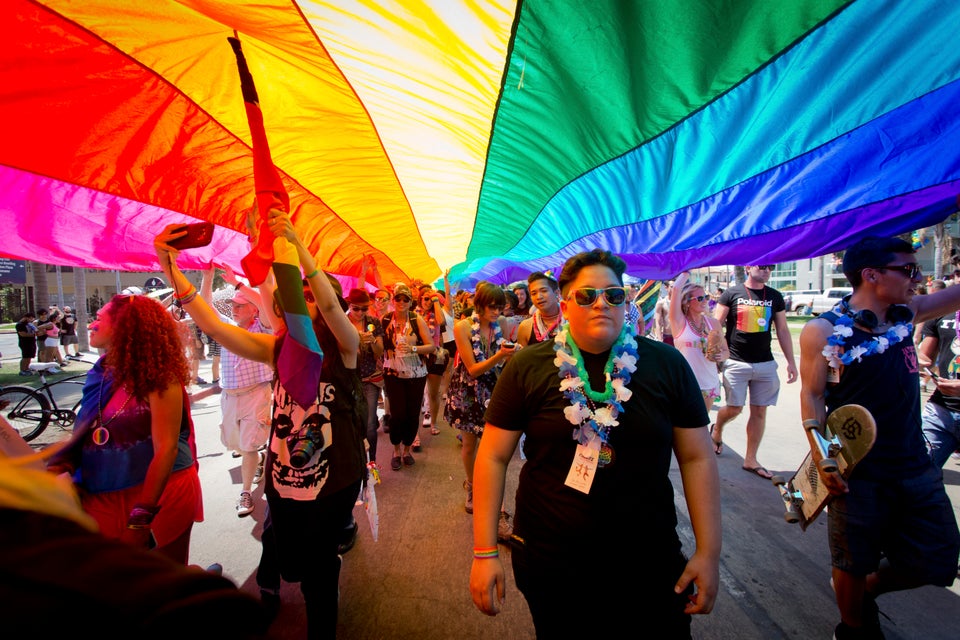
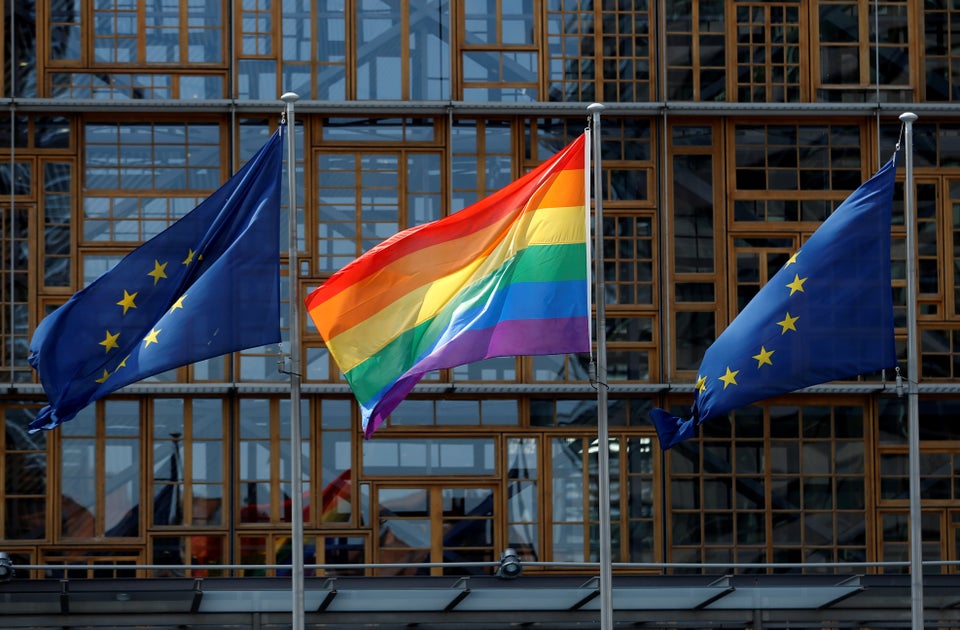
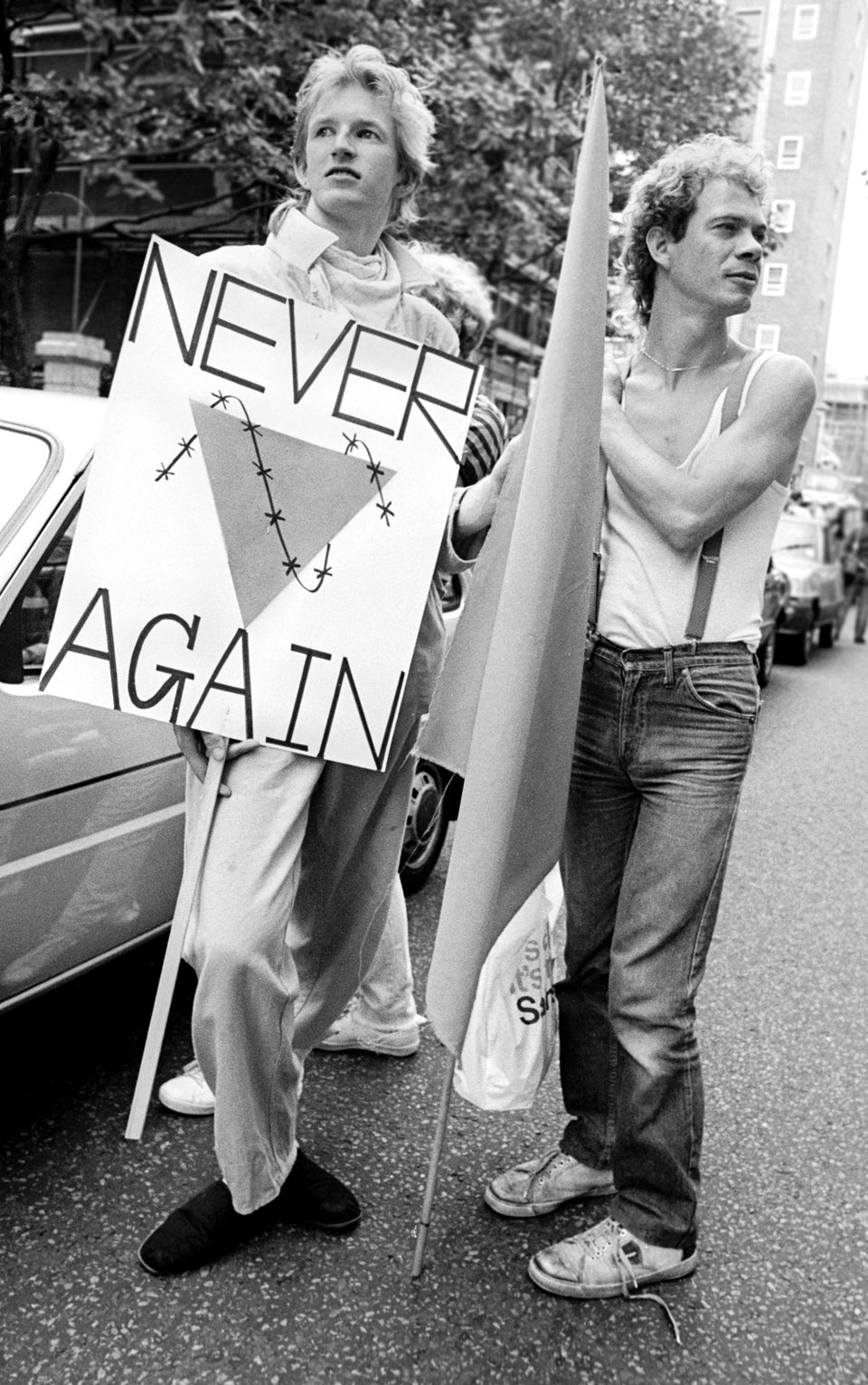
Baker saw the flag as a way of incorporating various colors into a single, coherent symbol. Of the pink triangle, he later wrote. "It functioned as a Nazi tool of oppression. We all felt that we needed something that was positive, that celebrated our love."
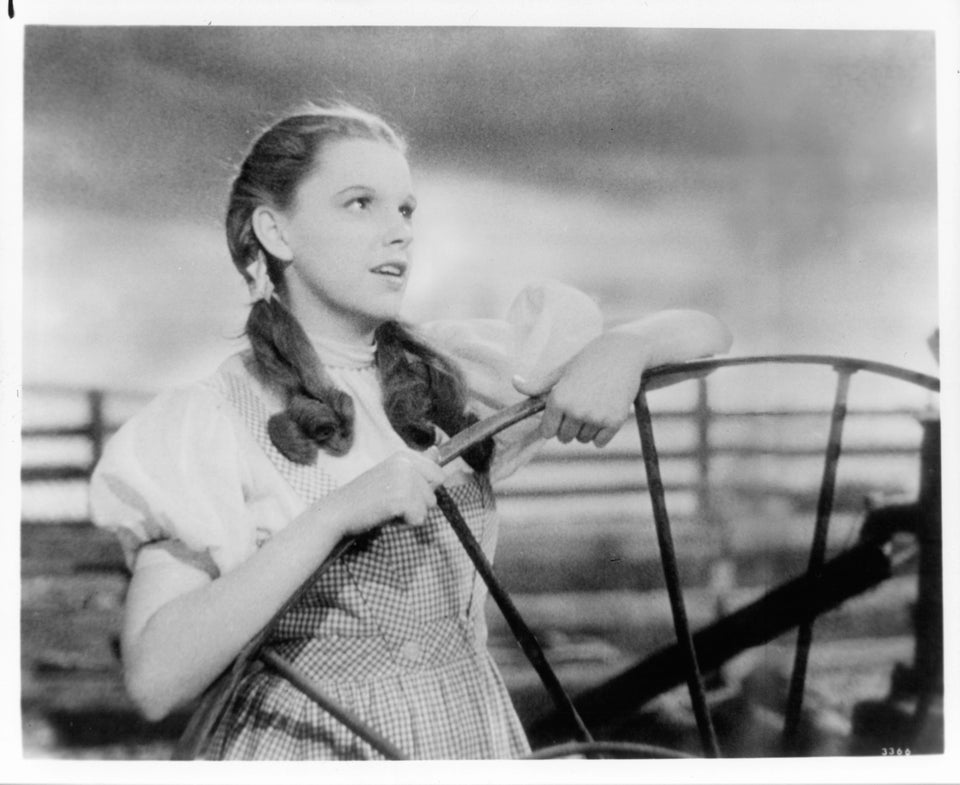
Not so, says Beal – though there’s a likely explanation for the confusion. The movie’s star, Judy Garland, was beloved by gay audiences during her lifetime and remains a queer icon. Garland also is often culturally linked to the Stonewall riots, which are considered the start of the modern LGBTQ rights movement and took place on June 28, 1969 – less than 24 hours after her funeral.
Baker, Beal said, wasn’t bothered by this misconception and found it somewhat endearing. Like the fictional Dorothy, he was raised in Kansas.
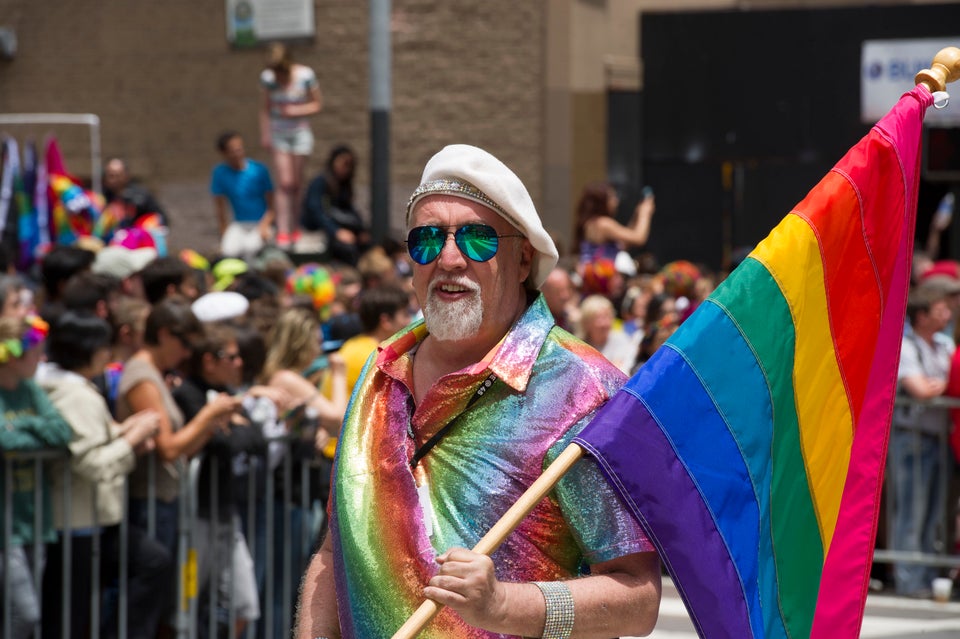
Later in life, he worked as a freelance designer, and created flags for the 1984 Democratic National Convention and Super Bowl XIX in 1985, among other occasions.
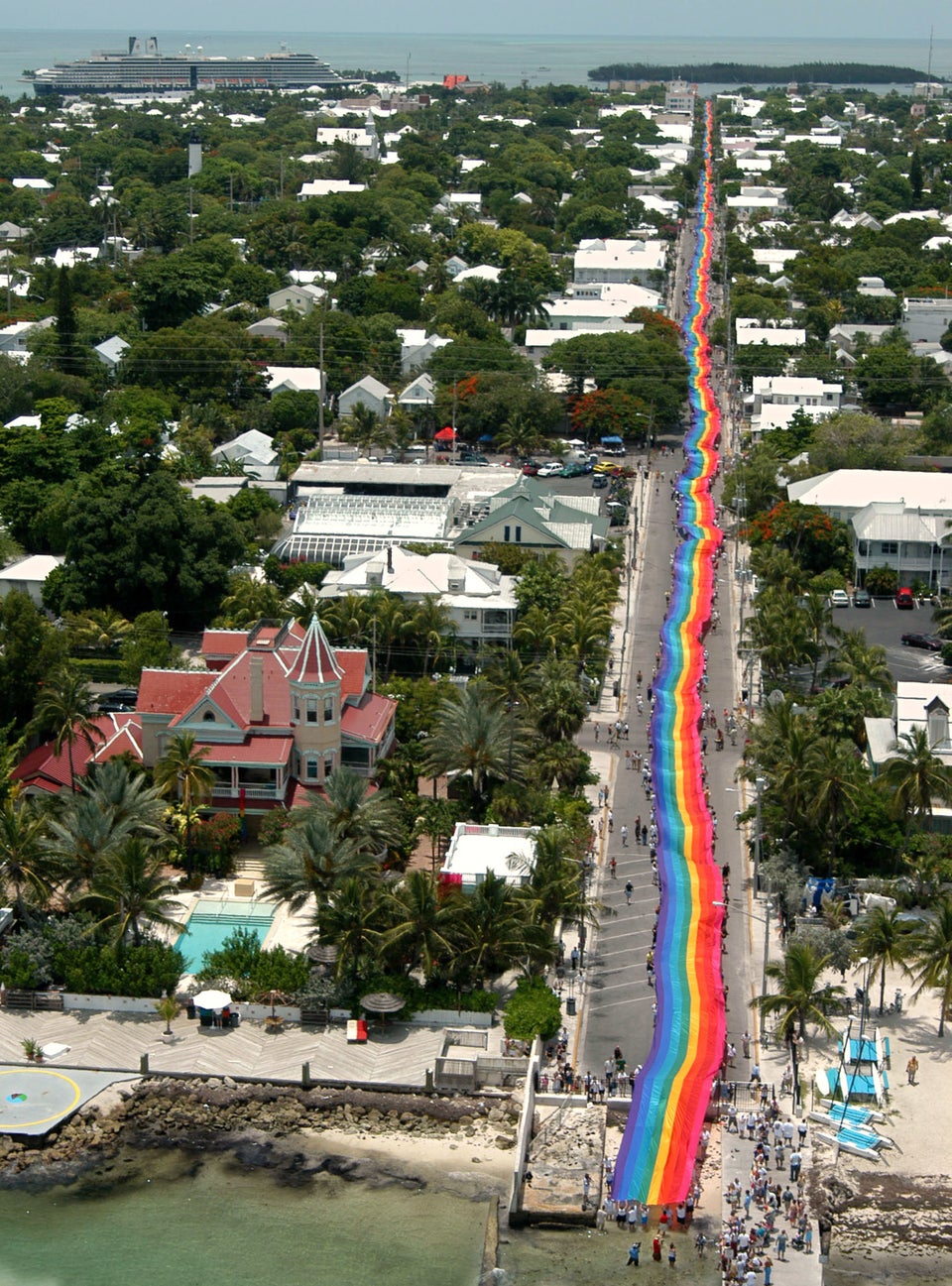
The artist restored the original hot pink, turquoise and indigo stripes for the massive flag, which was chronicled in the 2004 documentary, “Rainbow Pride.” After the celebrations in Key West ended, the flag was cut into sections and distributed to more than 100 cities around the world.
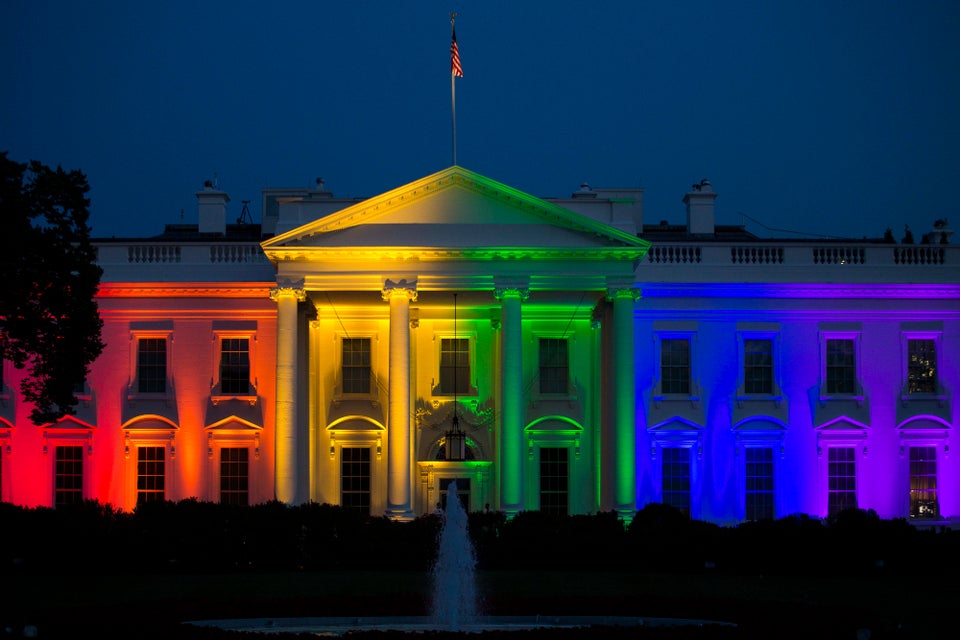
Seeing the illumination of those landmarks “blew Baker’s mind,” Beal said. “I think he was overwhelmed with joy that this flag made by hippies… in San Francisco had become a permanent worldwide symbol.”
Baker was especially forever grateful to Jeff Tiller, who was then the White House’s associate communications director and reportedly conceived the idea.
“[Tiller] really lit the fuse,” Beal said.

The move seemed out of place, given both the tone of Trump’s campaign and his vice presidential running mate, Mike Pence, who has a record of opposition to LGBTQ rights.
Baker responded to Trump’s election, Beal said, by creating a nine-color rainbow flag with a lavender stripe added for diversity. He also unveiled an art installation of concentration camp-style uniforms emblazoned with oversize pink triangles that was displayed at a San Francisco gallery.
“That’s how much he feared the Trump regime,” Beal said.
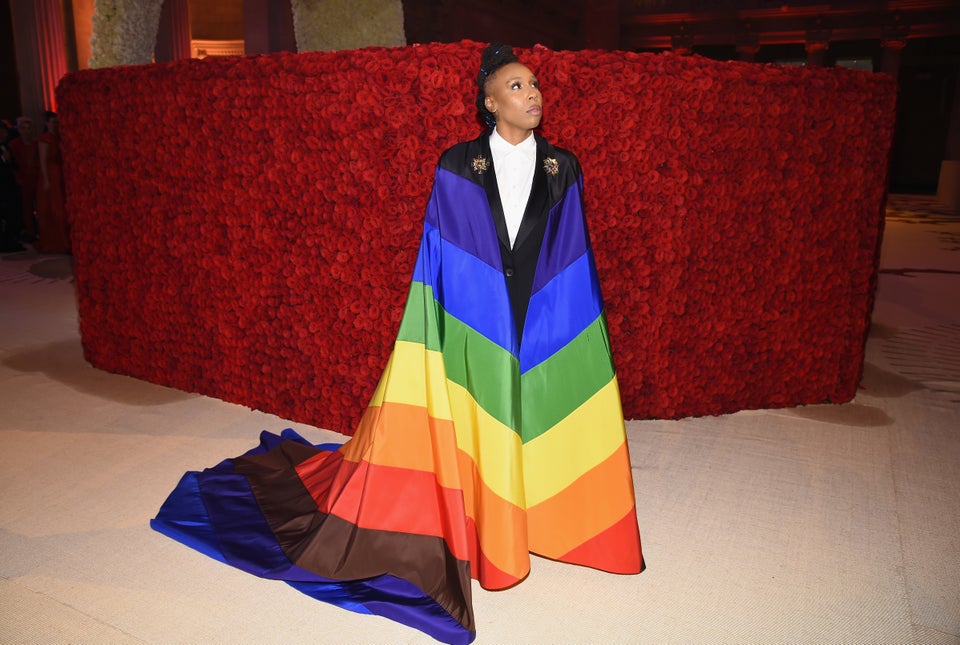
Philly's flag was created after a series of complaints against LGBTQ bars in the city, some of which had allegedly denied entry to people of color based on vague dress codes. The revised flag sparked controversy among some critics, who viewed adding stripes to Baker's original design as disrespectful.
This was the version Waithe (in the photo immediately above) wore to the Met Ball.
As for Baker, "he would have loved it," Beal said. "He was not precious about how the flag was used -- he might have added those colors to the flag himself for them."
#TheFutureIsQueer is HuffPost’s monthlong celebration of queerness, not just as an identity but as action in the world. Find all of our Pride Month coverage here.
